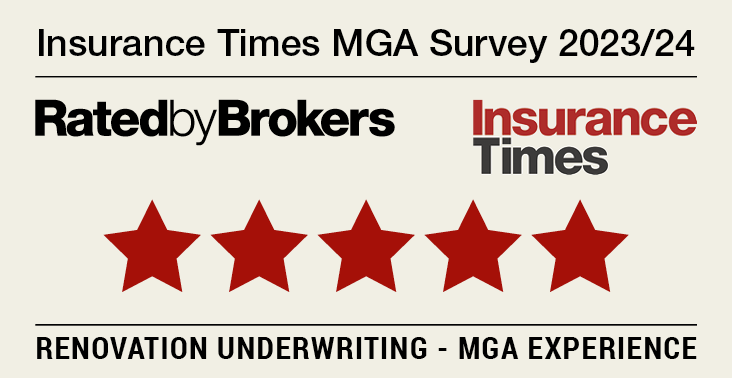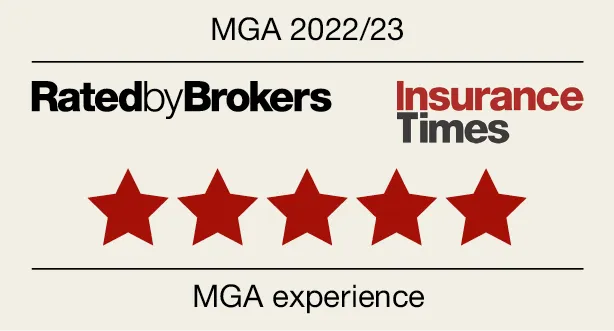
According to Historic England, Grade II* listed buildings represent just 5.8% of all listed buildings in the UK, and are of exceptional historical and architectural value. Regulations strictly protect their features and any work on them requires formal consent from relevant authorities.
Insuring a Grade II* listed building is always uniquely complex, not least when that building is undergoing renovations. Drawing on our recent work on a beautiful Grade II* listed building in Gloucestershire, we outline the key factors to consider when navigating the renovation insurance needs of these historic properties.
Mandatory reinstatement requirements
Owners of Grade II* listed buildings are legally required to restore them to their original condition following any damage. This “like-for-like” restoration often necessitates sourcing rare materials, hiring skilled artisans and accommodating extended project timelines – factors that can drive up costs substantially.
Additional premium expenses, such as replacing a specific type of slate roofing or recreating an original six-panel door, should also be carefully considered. Setting clear expectations with clients early on about these potential costs can help streamline the restoration process.
Navigating listed building consent
Even minor changes like choosing paint colours or replacing internal fixtures could require amendments both for planning permission and listed building consent. This additional regulatory layer can add time and complexity to any project; impacting the overall timeline and the insurance policy chosen. Ensuring clients understand the importance of obtaining all necessary permissions is essential, as unauthorised modifications can result in significant fines or penalties which are not covered by any insurance.
Selecting the right contractor
Experienced contractors are crucial when working on listed building renovations. Insurers often require a proven track record on similar projects to ensure the contractor’s ability to handle sensitive, irreplaceable features. Errors with unique elements such as leaded casement windows can lead to costly setbacks. Reviewing a contractor’s expertise upfront helps mitigate those potential risks.
Addressing increased fire risks
Historic timber structures in many listed buildings elevate the fire risk, yet the listed status of these properties often prohibits altering or removing such materials. This means fire risks remain high. Making sure the insurance in place during renovation fully covers the property regardless of the cause of fire is essential – as many ‘buildings only’ policies will exclude any loss or damage arising from the works in progress. As an example, that may include a fire started because of a contractor’s tools left on charge overnight.
Specialist coverage including accidental damage
Listed properties are just as susceptible to accidental damage during renovations as a property which is not listed – but extent and cost of damage can be exacerbated if contractors unintentionally damage unique fixtures which are integral to a property’s listed status. Given that some of these features are irreplaceable, it is crucial that your client has insurance which specifically covers accidental damage, and they aren’t left hoping that their contractor’s insurance will step in.
It is always sensible to factor a contingency into the policy period for a listed property, to account for the likely delays when waiting for listing consent over and above the ‘usual’ setbacks which happen on over 90% of all projects we see.
Project-specific coverage: Renovation Master Policy
For large-scale renovation projects, such as the 18-month restoration of a 17th-century property in Gloucestershire, our Renovation Master policy can be invaluable. The policy is tailored to cover the unique risks associated with listed building renovations, including additional covers such as the cost of new plans, drawings and professional fees following a loss, debris removal costs (which will typically be much
higher on a listed property), and alternative accommodation. Alternative accommodation is a very important consideration, as it will usually take longer to repair a listed property and settle a claim than a property which is not listed.
Case in point: Key features of the newly covered Gloucestershire property –
why it’s Grade II* listed
This Grade II* building, with sections dating back to the 1600s, includes features that make it a preservation priority. But, have you ever thought about what might make a property listed? Here are some factors specific to the property in Gloucestershire that we’ve recently confirmed cover for: –
1. Notable architectural design
The building features work from historic architects like Thomas Baker and Ernest Gimson, showcasing Cotswold craftsmanship and arts and crafts influences.
2. Distinctive materials
Built with original limestone rubble, stone slate roofing, and a 1845 ironwork porch embodying regional building traditions are all integral to its listed status.
3. Historic interior details
The unique doorcases, period fireplaces and an original timber staircase all contribute to the property’s historic value and require careful preservation.
4. Period Windows and stone mullions
With timber cross-windows, stone mullions and leaded casements highlighting the property’s heritage, each feature adding to the listing’s significance.
In summary, getting the insurance right on a Grade II* listed property undergoing renovations really is imperative. Even where it goes horribly wrong, there is a duty to reinstate the existing property as close to its original form as is possible, even though it might be quicker and cheaper to demolish the damaged structure and start again.
Clients must also be fully prepared for the potential costs, delays and regulatory demands involved in maintaining these historic buildings. With careful planning and attention, to detail these architectural treasures can be protected for generations to come.
Our specialist underwriters have deep understanding and experience in insuring listed property renovations. Log into our Broker Hub to make a full policy enquiry or use our Quick Indication Calculator for an instant indication of a premium price range.




















